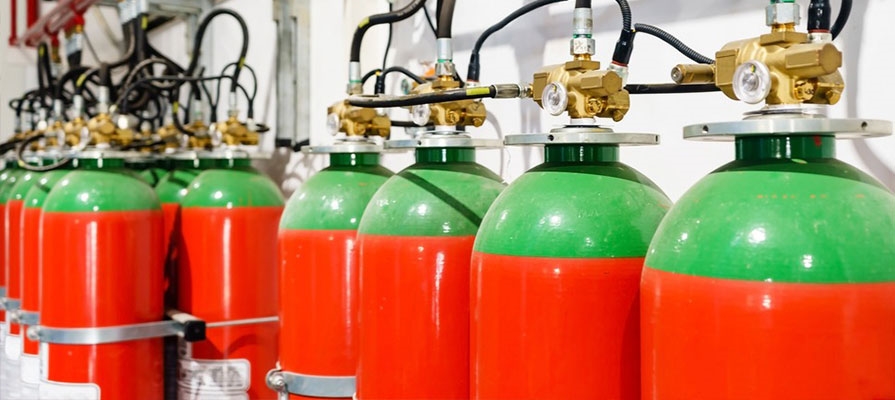
Inert Gas Suppression systems operate based on the principle of suppressing fire by using argon and nitrogen gases and their mixtures as extinguishers and reducing the oxygen concentration in the protected area. Fire is suppressed by discharging the inert gas or gas mixture in the system to the protected area in an amount that will reduce the oxygen concentration to a point where ignition cannot occur again.
As the gases used in inert gas suppression systems are already found in the atmosphere, they do not have global warming effects and their potential to harm the ozone layer is zero. This is a serious advantage over halon-based chemical gas suppression systems. In addition, inert gases and their mixtures have no conductivity, and they are odorless and colorless. They do not have any corrosive effects on materials such as nickel, steel, stainless steel, copper, brass and plastic etc.
Types of inert gas suppression systems are as follows:
As they are close to the air by weight, the time for inert gases to leave the protected room is longer than for chemical clean gas extinguishers, which means that they have more tightness tolerances. As they do not leave any toxic residues during a fire, they are extremely suitable for use in locations where people are present.
Inert Gas Suppression systems, which are designed and installed in accordance with TS EN 15004, VdS and NFPA 2001 standards, can consist of sets with one or more cylinders. While the cylinders are pressurized at 150, 200 or 300 bars pressure, the operating (installation) pressure of the systems is between 55 and 60 bars.